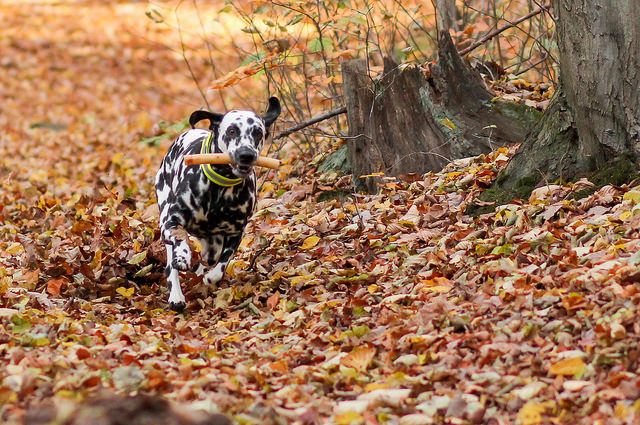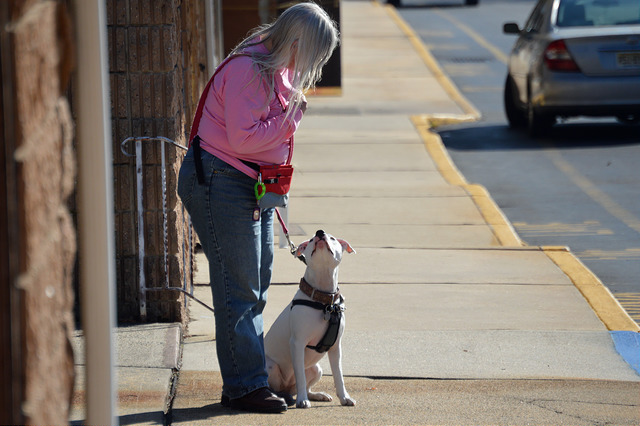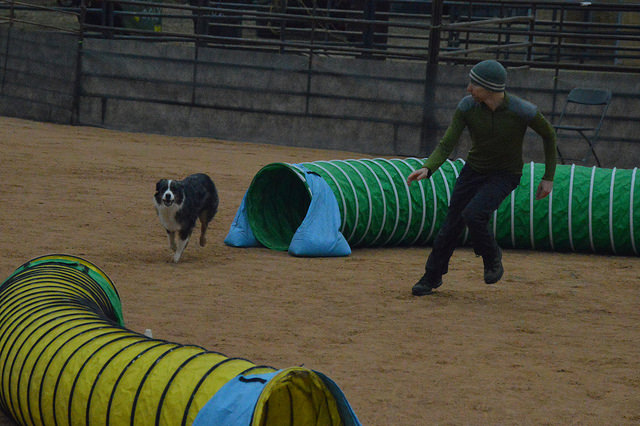Awhile ago, I wrote about new research that showed hand signals resulted in more correct responses from dogs than verbal cues, in most cases. The exception was the COME cue. This research was done on a small pool of Golden Retrievers and Labrador Retrievers that had been taught both hand and verbal signals as part of their water rescue training. So what should you, a pet parent, teach your dog? Here are the pros and cons to both ways of training.

Pros
Hand/Gestural Signals
- Dogs use body language as a way to communicate, so our gestures are something they are naturally inclined to notice and respond to, rather than ignore (as some dogs often do their owner’s voice!)
- If your dog goes deaf, you will still be able to communicate with them.
- Since your dog has to be looking at you to get your cues, it may promote better focus/attention on you.
- Since you mostly likely will not be using these signals for anything else, the risk of your dog responding to a “cue” out of context is almost none. For example, this is why many trainers tell their students not to use “okay” as the release word to their stay. It is said so often in normal conversation that you may accidentally release your dog. This probably won’t happen with hand signals.
Verbal Signals
- Your dog doesn’t have to be within eyesight to get your cue. For example you can call “come” to your dog if he’s wandering in the woods and he can hear you even if he can’t see you.
- If your dog goes blind, you can still communicate with them.
- You can cue your dog even if your hands are full. For example if you are holding your leash, clicker and treats. Or, if your hands are full of groceries and need you need to tell your dog OFF.

Cons
Hand/Gestural Signals
- If your dog is out of sight, you can’t cue him.
- If your dog goes blind, he will be unable to respond to your cues.
- If your hands are full, you will not be able to cue your dog.
- It can be hard to learn to be consistent with your cues. Like learning sign language, you need to be able to replicate each signal the same way every single time. This may include body position, not just the hand itself.

Verbal Signals
- Since dogs are not naturally able to understand our language, it may take longer to get your dog to listen to your cues.
- If your dog goes deaf, you won’t be able to communicate with him
- The way you say your cue – tone, pitch, accent, etc. – will become part of it. This means your dog may not respond to someone else giving the cue if it doesn’t sound the same. The research showed that when a stranger gave verbal cues, the dogs never responded.
- If you say the word out of context, your dog may still respond to it (as we mention above with the word “okay” as a release cue).
Related: SpiritDog Training Reviews
Best of Both Worlds
As you can see, the two types of cues complement each other – making up for each other’s shortcomings. So you may find it’s best to teach your dog both a hand and a verbal signal for each cue. This way, you can use the cue that will work best in the given situation. For example, you may use a hand signal for sit most of the time, except when your dog is about to knock you over while carrying the groceries in, then you may say the verbal. Based on the research, a verbal come is definitely a good idea!
Many agility handlers use a combination of body signals (including hand signals and body position) and verbal to make sure their dog knows which obstacle to take.

Since dogs tend to pay more attention to body language, teach the verbal cue first. Then, go back and add the hand signal. Trainers have found that if you teach your dog the hand signal first, it can be hard to get them to listen to the verbal since they are predisposed to pay attention to body language.
 Toledo, United States.
Toledo, United States.